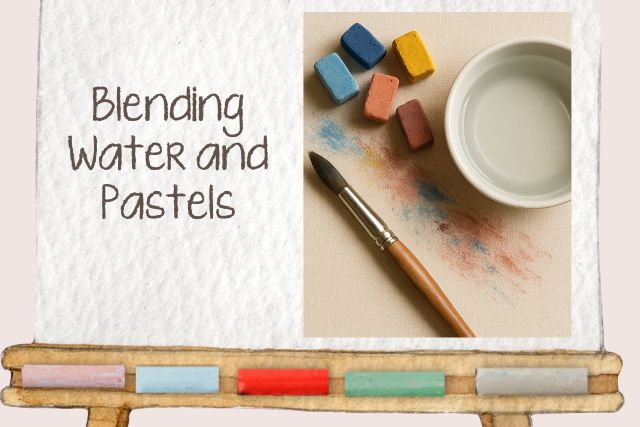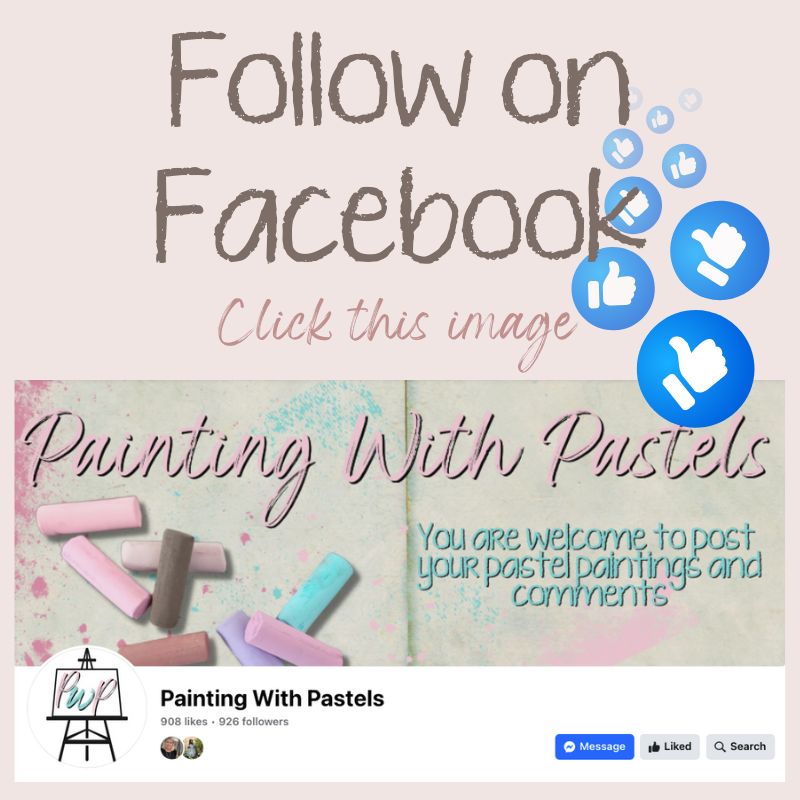Blending Water and Pastels: The Unique Art of Ian Fletcher
In Cape Town, South Africa, artist Ian Fletcher has taken an intriguing approach to blending water with pastels, creating striking and unexpected results. While using water with pastels is not an entirely new technique, Fletcher’s method adds an innovative twist that produces a more dramatic and textured effect.
The Traditional Approach to Water and Pastels
Typically, when artists combine pastels with water, they begin by laying down dry pastel pigment on paper. Once the pastel is in place, a brush dipped in water is used to spread and manipulate the pigment, much like watercolor paint. This process allows for soft blending, delicate transitions, and the ability to create washes of color that mimic the fluidity of traditional watercolors. By adjusting the amount of water and the pressure applied with the brush, artists can achieve varying levels of intensity and saturation. This technique is often favored for its ability to create ethereal, dreamlike effects while retaining the vibrant, chalky quality of pastels.
Watch this video:
Ian Fletcher’s Distinctive Method
However, Ian Fletcher takes this technique a step further, refining and enhancing it in a way that produces a bolder, more intense finish. Rather than simply applying dry pastel first and then activating it with water, Fletcher immerses the pastel itself in water before applying it to the paper. This approach allows for greater control over texture and depth, resulting in a unique painterly effect that bridges the gap between traditional pastels and wet media.
In Fletcher’s own words:
“….I retired over 10 years ago, and have been trying to catch up with my amateur painting methods ever since. Not easy, when there is a whole world of literature with examples of styles out there. I am a member of South African Society of Artists, founded in 1902, based in Cape Town.
I have been painting in watercolor for over 25 years – largely unsuccessfully, but with some success in pen and wash, which I enjoy.
To start, I paint an undercoat (very pale) on watercolor paper, then draw an outline with anything white (e.g., w/c pencil) which can just be seen.
Now for the color. I wet my 1″ dry pastel (cube shaped, soft or hard) holding it with finger and thumb, dipping all of it into a bowl of water. I then give it a good shake or two to rid it of any excess water. I then draw with the pastel stick as my mood takes me—wiping, pressing soft or hard, twisting, direction, edges, and so forth, until I think that is enough! I very much like the depth of tone which is so hard to get in watercolor because of the water.
With the above technique, there must be plenty of alternative routes to follow. I am sure I have only touched the tip of the iceberg….”
Why This Method Stands Out
Fletcher’s technique offers several advantages over conventional pastel and water methods:
- Greater Depth of Color – By wetting the pastel before application, the pigment becomes richer and more intense, eliminating the dusty or chalky residue often associated with dry pastels.
- Stronger Texture and Dimension – Unlike traditional blending with a brush, which can sometimes dilute the vibrancy of pastels, Fletcher’s method allows for more pronounced strokes, adding texture and movement to the artwork.
- Enhanced Control – Since the pastel stick itself is dampened, the artist can manipulate the application with more precision, using pressure, direction, and motion to create dynamic effects.
- A Fusion of Media – This method bridges the gap between pastel, watercolor, and even oil painting, offering a fresh alternative for artists looking to experiment with new techniques.
The Future of This Technique
As Fletcher himself notes, this method likely has many unexplored possibilities. Artists who are drawn to experimentation may find new ways to expand on his process, perhaps by layering colors, combining different pastel types, or integrating other wet media such as ink or acrylic washes.
Many thanks to Ian Fletcher for sharing his innovative approach! His work demonstrates how traditional mediums can be pushed beyond their usual boundaries to create something truly unique and expressive. For artists looking to expand their repertoire, this pastel-water fusion is a fascinating technique worth exploring.

If you’re wanting step by step lessons head over to the Shop and view my books.
I’d appreciate you sharing this article:




0 Comments